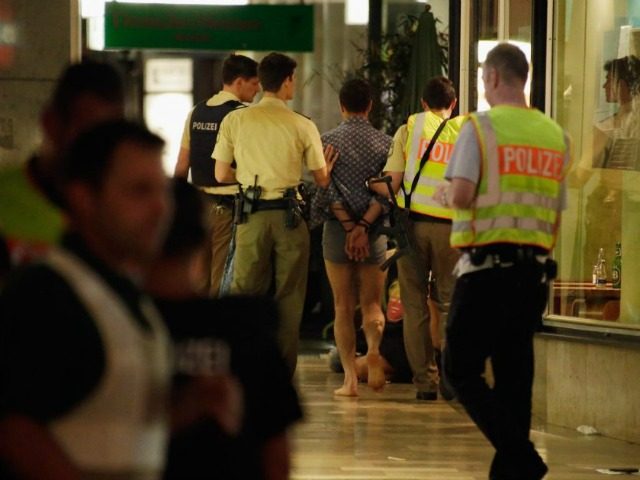When David Ali Sonboly shot and killed nine people in Munich on Friday, he proved again the impotency of background checks, gun bans, and a whole list of other “stringent” and “restrictive” gun controls, none of which kept him from getting his hands on the pistol he used to slaughter innocents.
The Sun reports that Sonboly’s victims were “nearly all … aged between 14 and 21.” He used Facebook posts to lure people to a McDonald’s in the area where he planned to attack. Cell phone video captured images of 18-year-old Sonboly calmly stepping out of the restaurant, raising his gun, and opening fire at bystanders on the sidewalk.
He used a Glock 17, according to CNN. This Glock 17 is a semiautomatic handgun, and the “semiautomatic” designation makes it very difficult to acquire in Germany.
Think of it this way: only certain types of guns are legal to own in Germany, and among the legal types is a hierarchy of sorts with an increasing level of restriction on how one may acquire and keep the weapon. For example, fully-automatic rifles are banned, period. And The Local reports that semiautomatic rifles can only be acquired for “hunting or competitive shooting.” But even for legal guns, there are a myriad of hoops through which one must jump before being allowed to possess.
The University of Sydney describes Germany’s gun laws as “restrictive.” A semiautomatic pistol can only be legally acquired with “special authorization.” Gaining such authorization begins with passing “a background check which considers criminal, mental health, and addition records.” But that is only the beginning. As The New York Times summarizes, the process of acquiring the gun occurs “over the course of several months.” Include the issuance of “a certificate that proves you know how to handle both the weapon and its ammunition. You must prove that you can store it safely, in a place to which only you, as the owner, have access,” among other things.
But none of these things–background checks, mental checks, gun bans, licensing or certificate requirements, storage rules, and more–proved a hindrance to Sonboly and the attack he carried out.
Other European countries with “restrictive” gun controls–France, for example–have also seen that gun control does not prevent those with criminal or terrorist inclinations from carrying out their evil deeds. Despite France’s stringent background check system, licensing requirements, and bans on whole categories of weapons, 12 innocents were slaughtered in a firearms-based attack on January 7, 2015, followed by 130 slaughtered in another firearms-based attack on November 13. Wedged in between these two attacks was a firearms-based attack in Denmark, where gun control is also described as “restrictive.”
In the end, the “restrictive” gun control in Europe does the same thing it has done in U.S. cities like Chicago: it keeps law-abiding citizens defenseless while posing little hindrance to people committed to carrying out evil.
AWR Hawkins is the Second Amendment columnist for Breitbart News and political analyst for Armed American Radio. Follow him on Twitter: @AWRHawkins. Reach him directly at awrhawkins@breitbart.com.

COMMENTS
Please let us know if you're having issues with commenting.